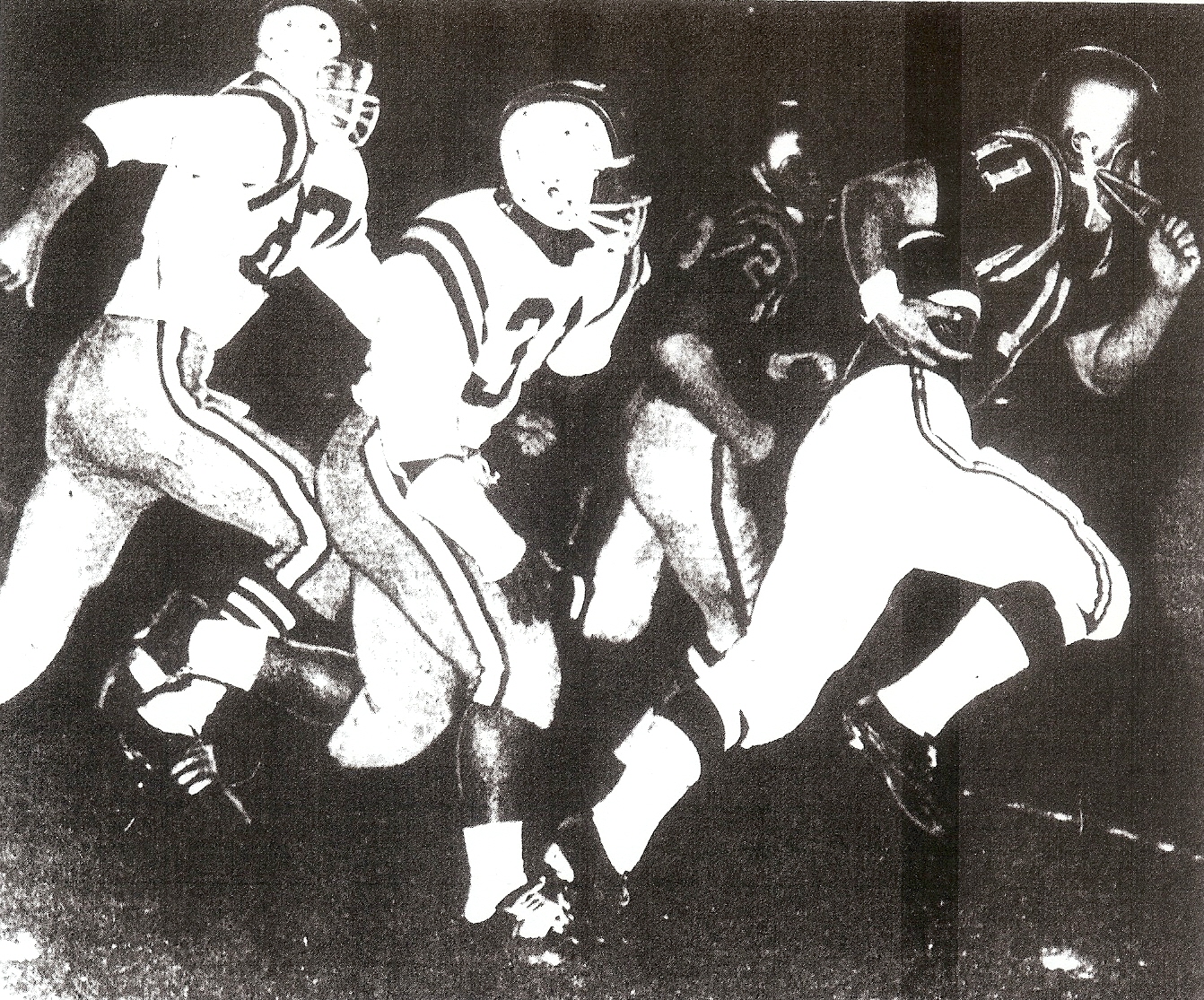San Diego Section bosses, unlike their successors 40 years later, were determined to keep the playoffs short and sweet and the season’s length to their liking.
The administrators came up with a format that was surprisingly agreed to by St. Augustine and the 11 city schools and created an odd regular-season conclusion this year.
The final week’s schedule, described by some in the media as the “lame duck card,” offered no title-deciding or playoff-qualifying contests. All Eastern and Western league action was nonleague.
The two city circuits had completed league play a week early.
Games and opponents for the final slate were shuffled to allow for a “private playoff” between Morse, champion of the Eastern League, and Western League winner Point Loma.
This was possible when San Diego and Mission Bay, Morse’s and Point Loma’s regularly-scheduled opponents, were switched and San Diego played Mission Bay.
The Cavers-Buccaneers contest freed the Tigers and Pointers for their postseason “play-in” game.
The playoff format was complete after Point Loma defeated Morse, 21-14, to gain the round of four the following week, assuring a postseason run of no more than two weeks.
SCHOOLS “PLAYED”
Harlon Bartlett of the Evening Tribune came out swinging in September, writing that the 12 Eastern and Western League members “fell victim of the hoodwink before the first missed block.
“It all happened last winter when city administrators allowed the SD-CIF council to allocate one playoff berth to the finest football flesh in the CIF,” said Bartlett.
Bartlett meant that the talent in the Eastern and Western leagues was superior to that of the other major alliances in the County and that the two city entities had agreed to a ridiculous proposal.
“That (Eastern or Western) team then will join with the Metro (Chula Vista), Grossmont (Helix), and Avocado (Oceanside) champions to form the usual, four-team field,” Bartlett continued.
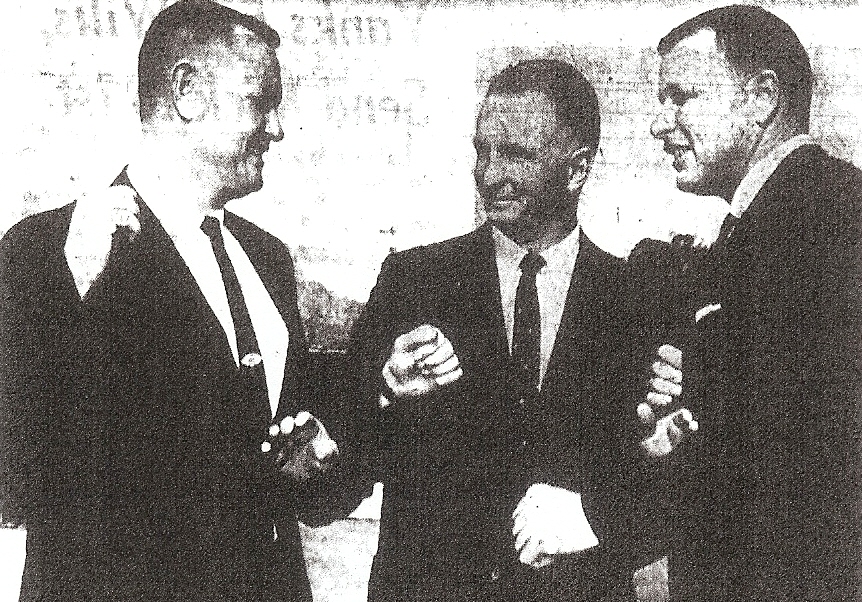
The Avocado League, designated as small school since it was formed in 1953, became the fifth major loop this season. This could have thrown a wrench into the council’s desire to begin the postseason with only four teams.
“I don’t know what will happen after this year,” said CIF commissioner Don Clarkson. “I know the senior high principals requested a change be made for next year. The only answer to this thing probably is re-leaguing or expanding the playoffs.”
AN EIGHT-TEAM BRACKET?
By adding league runners-up (Bennie Edens’s suggestion in 1965), the following second place teams would be in the postseason this year: University (8-1), Grossmont (7-1), Kearny (6-3) and either Hoover (6-2-1) or St. Augustine (4-4).
Not exactly a flood of mediocrity and adding only one week to the season.
Other teams that finished lower than second place, such as Lincoln (7-2). Carlsbad (7-2), Granite Hills (6-2), and La Jolla (6-3) would have been on the outside, looking in.
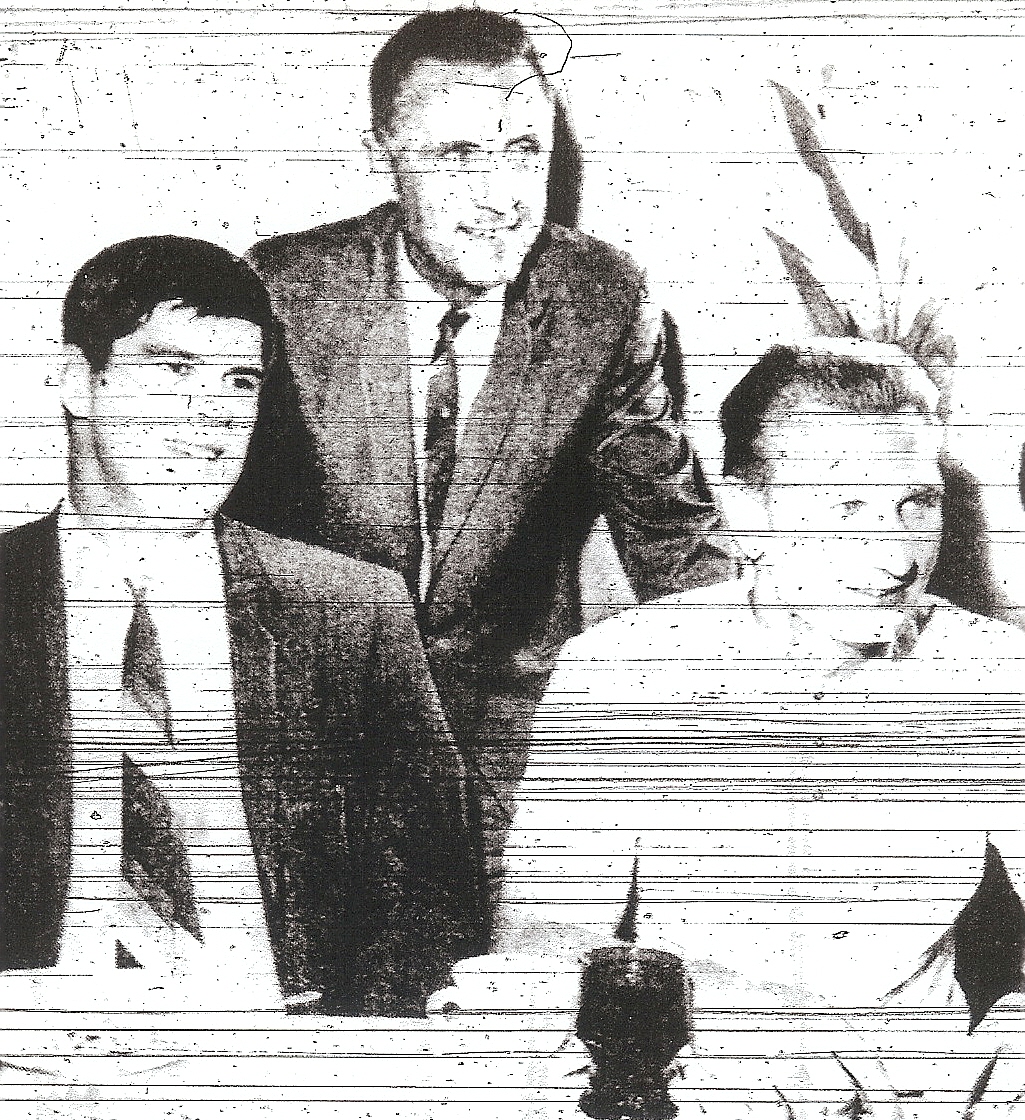
CAVERS, BUCCANEERS JOUST
The game had school pride ramifications.
By winning, Mission Bay would finish with a 4-4 record, its first nonlosing campaign since 1958.
By winning, San Diego High would avoid its worst season since the Hilltoppers first teed it up in 1891.
Staring at a possible 0-9 finish, the Cavers faced the ignominy of being less than the 0-6-2 club of 1961, the 0-5-1 of ’08, and the 0-3-1 of ’00.
Quarterback Leonard Simon, whose brother Steve was the signal caller in San Diego’s last championship run in 1959, passed 47 yards to Howard Johnson for one score and three yards to Howard Chase for another in the fourth quarter as the Cavemen rallied to a 19-14 victory.
Perhaps just as memorable, a dustup started on the last play of the game and erupted into what observers described as a “wild melee”.
Order was restored and San Diego stayed out of the history book.
THEY SAID IT
Helix’ Warren Vinton, on his playoff opponent’s offensive specialty unit: “We’re a little worried about Point Loma’s ‘Dirty Dogs’, but (defensive coach) Bill White has come up with a rabies defense….
Bennie Edens on returning 21 lettermen from the 1965 team that went to the San Diego Section finals: “We had a good year, so we lettered everybody.”
Hoover’s Roy Engle on his reluctance to talk about injuries: “After all, there are 500 mothers of Hoover High kids who won’t let their sons play football.”
Edens on some assertive ball carrying by John Cervinsky in a 25-6 playoff win over Oceanside: “He ran like a Tiger, and I don’t mean a Morse Tiger.”
Point Loma quarterback Bill Gable, after the Pointers rushed for 337 yards against Oceanside: “I didn’t think they were very good.”
San Diego’s Joe Duke: “If I had all of the players at San Diego, Lincoln, and Morse, I’d have a pretty good club.”
HORNETS’ GAIN
San Diego’s most painful loss was quarterback Jerry Powell, the last in a long line of great athletes from the same family.
Powell transferred to Lincoln as a junior and led the Hornets to a 7-2 record after guiding the Cavemen’s junior varsity to an undefeated season in 1965.
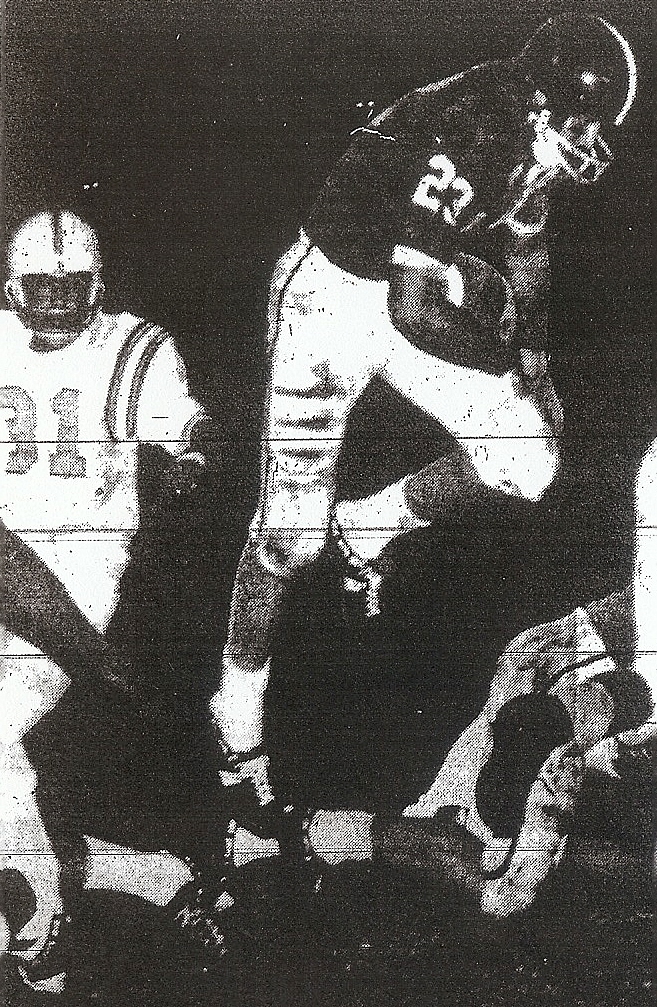
MORSTAD OR ADAMS?
Hoover’s John Morstad, the County’s third leading scorer with 16 touchdowns and 4 points after for 100 points, was being compared to previous Cardinals standouts.
“John Adams was a lot bigger (215 pounds) and could run over people,” said Morstad’s coach, Roy Engle, “but I don’t think Adams had the mobility Morstad has or John’s ability to score from anywhere on the field.”
Morstad, 6 feet, 175 pounds, also had a 50-yard average on 6 kickoff returns.
Adams scored 108 points in 1954 and generally was considered the school’s all-time best, along with George Stephenson (1951). Bob Miller set the school record with 126 points in 1947.
Engle tied for the County lead with 57 points when he led Hoover to a 7-1-1 record in 1935.
THE CATHOLIC BOWL
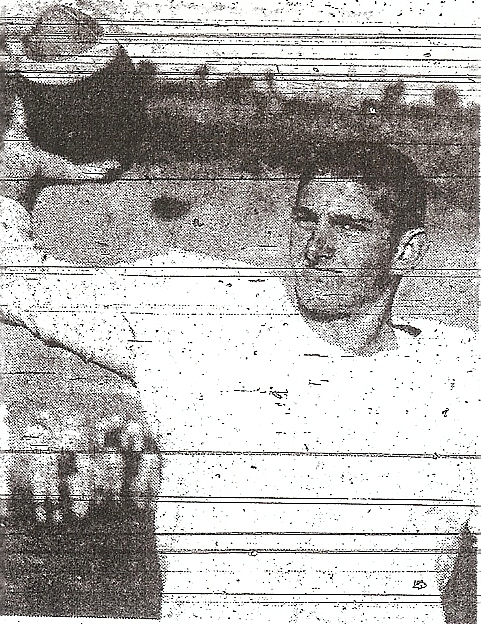
St. Augustine, playing football since 1924, and University, playing football since 1957, met in Balboa Stadium in the first game between the San Diego Section’s largest Catholic institutions.
Uni had been trying to get on the Saints’ schedule since Robert (Bull) Trometter became the Dons’ head coach in 1960.
As writer Jim Lindgren pointed out, “It turned out to be a case of dreadfully poor timing for the Nutmeg Street gang.”
Uni Quarterback Steve Dunning passed for two touchdowns in the first six minutes and the Dons’ defense allowed only two first downs as the school located across Linda Vista Road from the University of San Diego scored a shocking, 30-7 victory.
As far as timing was concerned, it was a down year (4-4) for St. Augustine and an up year (8-1) for Uni.
Dunning was the number two selection in the 1970 amateur baseball draft, picked by the Cleveland Indians out of Stanford University. Dunning became the second player in draft history to bypass the minor leagues and go directly to the majors.
Dunning pitched seven seasons for five teams and held the distinction of hitting a grand slam home run off the Oakland A’s Diego Segui in 1971. The feat was not duplicated by another pitcher until the Seattle Mariners’ Felix Hernandez turned the trick in 2008.
A star running back on Dunning’s University team was Mike Carey, destined to become one of the NFL’s most respected game referees.
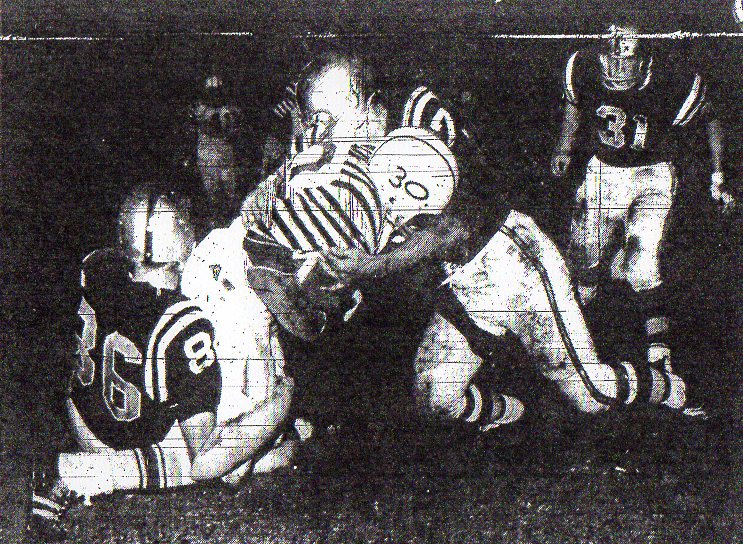
ROWDYISM
City schools’ superintendent Ralph Dailard imposed an embargo on night football. All games of Oct. 8 were played in the afternoon at the suggestion of police chief Wesley Sharp.
Sharp described a postgame beef at Morse after the Tigers’ game with Point Loma on Sept. 30 as “a near riot” and complained that he didn’t have enough patrolmen available to handle possible problems involving night football games every Friday.
Sharp was criticized publicly by one parent who said, “If police do not have the manpower to handle disturbances, then there should be a priority in developing the police budget.”
Parent Louise Dyer added that it was “extremely unfortunate” that police at the outset did not make it clear that students were not involved in the disturbance.”
An investigation showed that three students were involved and were expelled from school.
The school board, with Dailard pushing, lifted the ban after one week.
Sharp, who came in for criticism throughout the process, said he was “sorry the board of education did not agree with my recommendation. We will continue to police the games to the best of our ability.”
CIF commissioner Don Clarkson estimated that city schools lost about $7,000 in revenue by going from night to day.
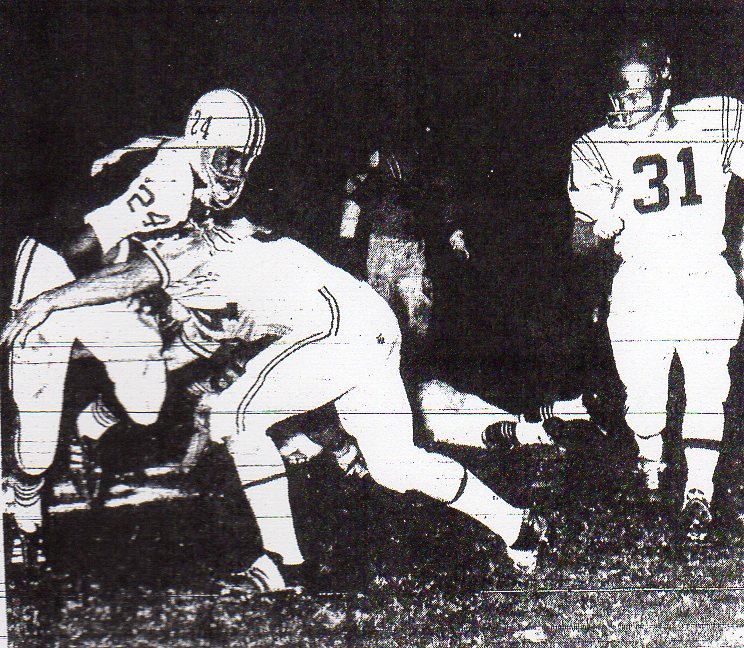
HYPERBOLE
Coaches engage in glowing adjectives.
Pick a season. Pick a coach. “Best I’ve ever seen,” is popular. So is “best we’ve ever had.”
Bennie Edens was more specific when he declared lineman Bill Alexander “the best pulling tackle I’ve ever had.”
Joe Duke was more general, boasting that the Cavemen had “more backfield speed than I’ve ever had.”
Helix’ Warren Vinton called Mark Brown “the best all-around running back we’ve ever had.”
NEW RULES
–The official clock stopped each time a team made a first down, to allow for the down markers to be moved. It probably added 4 or 5 minutes to the game.
–Coaching from the sidelines was legalized.
BASEBALL’S HIS GAME
Harry Elliott played centerfield for the pennant-winning, Pacific Coast League San Diego Padres in 1954. Elliott had 224 base hits and his .350 average led the league.
Elliott joined the St. Louis Cardinals and made the team in 1955 as an extra outfielder and pinch hitter. He returned to the Padres for the 1956 season and retired after playing for Chattanooga in the Southern Association in 1958.
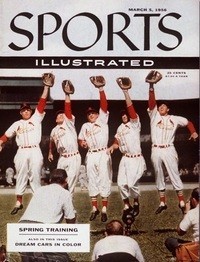
Elliott used his college degree and began a long teaching career at El Cajon Valley High. He was named the Braves’ baseball coach in 1960, but answered the call from principal John Cornelius when football coach Ed Foster left after the 1965 season.
Elliott, who played football at the University of Minnesota in the 1940s for the legendary Bernie Bierman, wore two hats for three seasons, one for baseball and and other for football,
Elliott’s first football team this season was 0-9 after returning one letterman and losing the other two from the 6-2-1 team of ’65.
Elliott was able to devote all his time to baseball after posting a 3-21 record in three seasons in football.
LIKE FATHER, LIKE SON
Escondido’s Bob Embrey rushed for 79 yards in 13 carries and scored a touchdown in the Cougars’ 26-7 win over Coronado. Beaming on the sideline was his father, head coach Bob (Chick) Embrey.
Morse end Ernie Mallory’s dad played an important role in San Diego’s prep basketball history. Ernie Mallory, Sr., was the top player on the 1935-36 San Diego High team that won the Southern California major division championship, the only such title ever won by a local school.
QUICK KICKS
The coaching landscape changed with 12 new bosses among the 42 schools playing …Oceanside’s 9-0 regular season represented the Pirates’ most successful since the 6-0 team in the war-shortened 1943 campaign…Helix, 9-1, enjoyed its best year since the 8-1’s of 1956 and ’61… Grossmont’s 7-1 was the best since a 9-1-1 record in 1947…San Marcos’ 340 points were divided by 17 players…the Knights defeated Marian, 47-13, for the Class A championship…San Marcos had a scare during the season when it pulled out a 7-0 victory over the same team…The San Diego Union student correspondent Anthony Cunningham kicked an extra point as the San Miguel School tied La Jolla Country Day, 13-13, and won the Southern League championship…Hoover and Kearny opened against each other for the fourth successive season, the Cardinals winning, 26-24…Mission Bay had dropped 15 consecutive Western League games since 1963 and 14 in a row overall before Gary Myron passed five yards to Matt Maslowski on the last play of the game for a 20-19 win over La Jolla…Mar Vista tied Chula Vista, 7-7, on a spectacular, 82-yard, tackle-eligible play…Mario Alcantar passed 15 yards to to 200-pound Bill Homer, who lumbered 67 yards for the Mariners’ touchdown…Point Loma had its “Dirty Dogs” on offense, but defense was the Pointers’ game…Roger Wagar stopped Crawford possessions with 4 interceptions and Glenn Killingbeck ran 73 yards with a fifth in the 14-6 victory over the Colts…Granite Hills’ 40-7 win over El Cajon Valley was its first over big brother…the Eagles’ campus, which opened in 1960, is located at 1719 E. Madison Avenue in El Cajon…the Braves’ home, opened in 1955, is at 1035 E. Madison, a separation of 1.8 miles….
